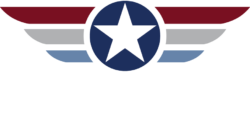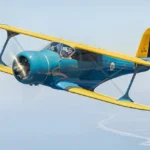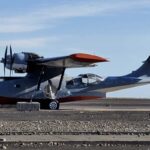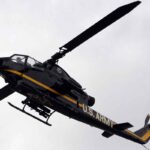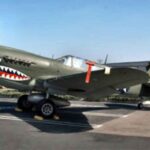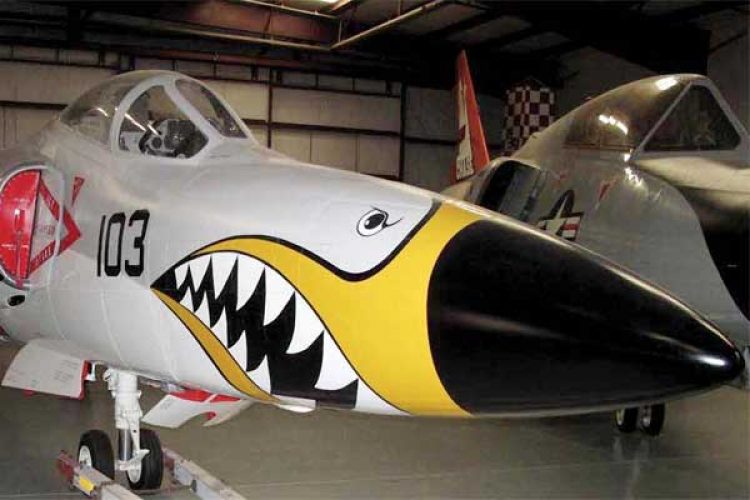
Service History
- Delivered: June 26, 1957
- (accepted by USN 8th aircraft in second production)
- Jul 1957 – NAAS/NAATC
- Mar 195 – VF-21 NAS Oceana (tail AD)
- Dec 1959 – NAAS/NAATC
- Aug 1960 – VT-23 NAS Kingsville TX (tail 3H)
- Jul 1965 – VT-26 NAS Chase Bellville TX (tail 3L)
- Mar 1967 – NARF Cherry Point
- Stricken: July 1967
Meet the first supersonic operational Navy jet fighter. This Tiger is one of the rarest of all the Grumman “cats” with only 200 built and very few survivors. The Tiger started life as an F9F Panther/Cougar variant and Grumman’s answer to a modernized Cougar. However, it was such a departure from the Cougar design with a 35 degree swept wing, coke-bottle shaped fuselage and reduced transonic drag, it was designated the F-11A Tiger.
The Navy saw potential in the design and soon placed it with five first-line squadrons, at that time it was the Navy’s fastest carrier-born fighter. The F-11 is also remembered for being the first jet to shoot itself down during a high-speed gunfire test in 1956 when it collided on descent with its own projectiles. The Tiger served for over ten years, retiring from military service in 1968 when it was replaced by the F-8 Crusader.
Two prototype Tigers were built with a J79 engine and known as the F-11F-1F Super Tiger. This aircraft would set the world altitude and the world speed records. Curiously, the Super Tiger was not ordered into production although it outperformed the Saab Draken, Lockheed F-104 Starfighter, Dassault Mirage III and Fiat G.91. The Lockheed scandal that followed divulged that bribes and influential politicians had prejudiced the outcome to ensure the adoption of the F-104 Starfighter.
The Tiger dazzled millions of onlookers from 1957- 1969 performing with the oldest flight demo team in the world, the Navy’s Blue Angels. In those early years, The “Blues” performed twenty-three precision standard tactical maneuvers, some while only 36” apart. Six planes and pilots (and a crew of 45 maintenance men) would insure the successful execution of 80 shows a year.
This F-11 Tiger was acquired in 2005 and to date has had only cosmetic restoration to display the markings of U.S. Navy squadron VF-21 of the Atlantic Fleet.
